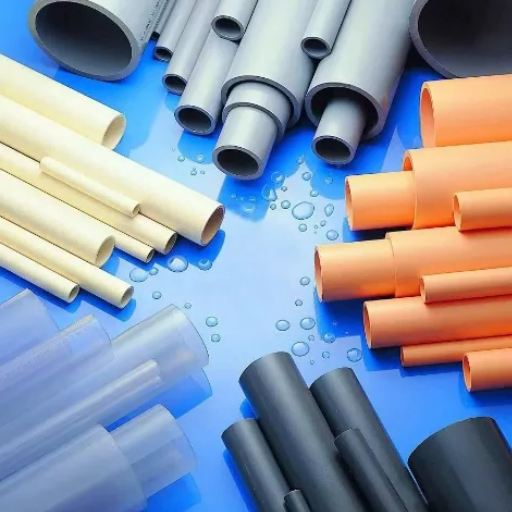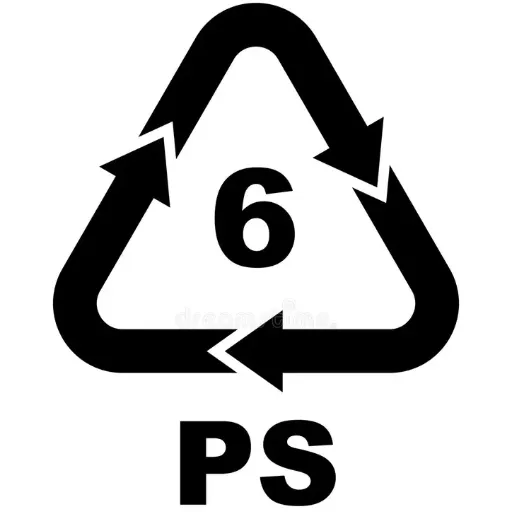Polyvinyl chloride, widely used today as an industrial polymer, is regarded as one of the most adaptable plastics. Used in building materials, medical devices, and everyday consumer items, almost every industry needs PVC. What gives PVC its flexibility? The answer can be found in the several grades of PVC, each having one or more properties designed for particular applications. In this comprehensive guide, we will explore the fascinating world of PVC grades, their characteristics, strengths, and the industries that utilize them. If you need to enhance your product knowledge and select the right material for your project, or stay informed about trends in materials, this article will serve as your go-to resource. Fasten your seatbelts as we embark on a journey beyond the understanding of PVC and into why it remains, to date, the prime choice of manufacturers and innovators.
Understanding PVC and Its Importance
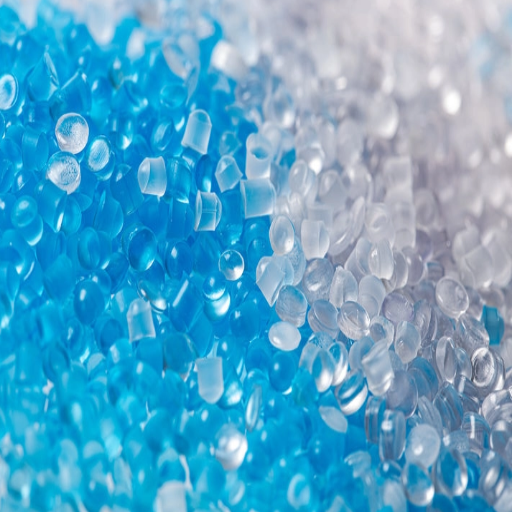
A Polyvinyl Chloride (PVC) Is What?
Polyvinyl chloride (PVC) is a plastic polymer derived from the combination of carbon, hydrogen, and chlorine. PVC, being a strong, inexpensive, and flexible material, is utilized in various applications across multiple industries. It is a thermoplastic-type material that can be heated and then molded into any shape for use. Its properties, including being waterproof, withstanding various chemicals, and being resistant to fire, make it highly dependable for both industrial and home use.
The different varieties of PVC, i.e., rigid and flexible, offer several options. Rigid PVC, also known as uPVC or unplasticized PVC, is used in construction materials for windows, doors, and piping due to its properties that provide strength and weather resistance. Flexible PVC is modified by mixing plasticizers into it and is consequently very soft, making it suitable for applications such as electrical cable insulation, flooring, and the packaging industry. PVC is recycled and reused, thus paving the way for sustainability.
Besides its physical attributes, PVC is deemed significant due to its low cost and energy efficiency. The production of PVC is less energy-intensive than that of other materials, such as aluminum or steel, thereby reducing significant greenhouse gas emissions. Manufacturers can use PVC due to its cheap raw materials and ease in processing to manufacture superior quality products with little economic resources, hence acting as environmentally sustainable. Thus, PVC will continue to be a major driver of innovation and a key agent in catering to industrial needs worldwide.
History and Development of PVC
A fascinating history is associated with Polyvinyl Chloride (PVC), dating back to the 19th century. PVC was first discovered in 1838 by the French chemist Henri Victor Regnault and later independently observed by the German chemist Eugen Baumann in 1872. PVC was not considered to have any uses at all, as it was too rigid and brittle to be workable. It was, however, carried forward in 1913 when Friedrich Klatte initiated research in polymerization studies under the action of sunlight, thereby laying the groundwork for modern methods of production.
In the 1920s and 1930s of the last century, during a period of rapid development, methods were discovered to make PVC flexible and stable by incorporating additives such as plasticizers, thereby greatly expanding its range of applications in building and consumer goods. It had developed in the years of World War II as a primary synthetic material used for military purpose wire insulation and coating, wherein its strength, resistance to corrosion, and other advantageous properties came in handy.
Today, PVC stands as one of the most widely used synthetic plastics in the world, with production volumes exceeding 40 million tons per annum. Among the manufacturing process innovations that enabled PVC production to become much faster and less burdensome to the environment is suspension polymerization. Additionally, advancements in recycling technologies allow the reuse of PVC waste, thereby promoting a circular economy.
The transformation of PVC as a versatile substance is further supported by ever-new research and development. Current applications involve medical devices, energy-efficient window frames, and sustainable infrastructures. History and innovation keep it alive to meet the demands of a diverse and dynamic global market.
Modern Application and PVC
Due to its durability, affordability, and versatility, PVC has found its way into a wide range of modern industries, thereby establishing itself as a core material. For example, PVC is widely used by the medical community for blood bags, oxygen masks, and catheters due to its safe, flexible, and non-contaminating nature. Global demand for healthcare-based PVC is expected to continue growing; this situation highlights its importance in enhancing patient care effectiveness.
PVC cannot be considered limited to its role in green construction, as it also contributes to energy-efficient windows and doors, with insulation qualities that reduce the energy consumption of buildings. According to several studies, buildings constructed with PVC are reported to yield significant energy savings.
PVC is also used in renewable energy infrastructure, such as photovoltaic panels and components for wind turbines, where its resistance to weathering and durability contribute to long-term performance. The same technological developments demonstrate that PVC is compatible with the latest technologies and sustainability targets.
Recyclability has become a crucial criterion nowadays, with enhanced recycling processes enabling the recovery and reuse of PVC waste, thereby minimizing its environmental impact. For instance, recent developments have seen a significant increase in post-consumer PVC recycling rates, which has helped industries adhere to the circular economy concept and reduce their reliance on virgin materials.
From life-saving medical applications to energy efficiency and renewable technological interventions, PVC can today fulfill the ever-evolving requirements of modern society while simultaneously keeping sustainability within its horizon.
Types of PVC and Their Properties
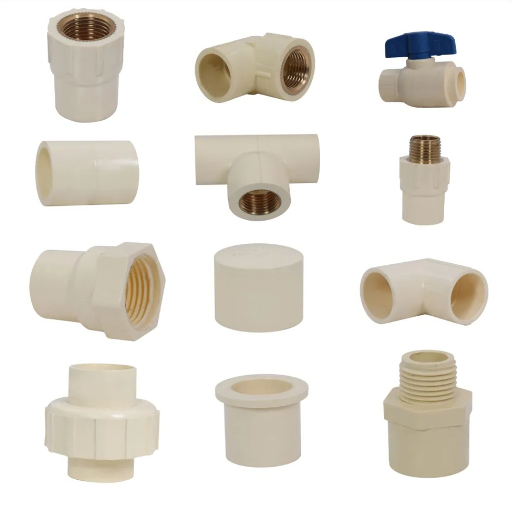
Different Grades of PVC
PVC, or polyvinyl chloride, is manufactured in various grades dependent on the desired application in terms of composition and physical nature. Direct classifications are rigid PVC (uPVC), flexible PVC, and chlorinated PVC (cPVC).
Rigid PVC (uPVC): Unplasticized PVC, also commonly known as uPVC, exhibits incredible hardness and durability. In the construction business, it is predominantly utilized in making pipes, window frames, and siding because it resists chemical reactions and weathering, as well as UV radiation. The strongest property in dimensional stability is required where it is expected to be used for structural engineering.
Flexible PVC: Flexible PVC is produced by adding plasticizers to the original resin, which provides the necessary flexibility and elasticity. Flexible PVC is commonly used as a coating material for electrical cables, in the manufacture of medical tubes, and for flooring applications. Owing to its high resistance to abrasion, it finds applications that require bending or movement without compromising on performance.
Chlorinated PVC (cPVC): Another commercially important polymer, cPVC is prepared by further chlorination of PVC, which imparts it better heat and chemical resistance, making it ideal for hot water distribution and transport of industrial fluids. It is considered almost indispensable wherever higher-temperature resistance without deformation is required, based on thermal stability and sanitation.
Manufacturers tailor PVC grades to meet exact industrial and commercial needs, allowing for customized materials that balance performance, cost, and sustainability, and thereby drive innovation across multiple industries.
Exploring PVC Resin Grades
PVC comes in many variants, each adapted for a specific application, based on its performance traits, processing methods, and end requirements. The two main variations of PVC resin are Suspension PVC (S-PVC) and Emulsion PVC (E-PVC), which are further subclassified based on molecular weight, viscosity, and other essential properties.
Suspension PVC (S-PVC): This is the standard grade of PVC resin, known primarily for its excellent stability and a wide range of processing capabilities. The S-PVC is typically used in the manufacture of rigid products, such as pipes, fittings, sheets, and profiles, and is also produced with high mechanical strength to suit conventional construction materials, conduit systems for electrical cables, and water distribution networks.
Emulsion PVC (E-PVC): This grade of resin is produced through the emulsion polymerization process and is valued for its superior surface finish and small particle size. E-PVC is more suitable for applications requiring higher degrees of vibration resistance, such as synthetic leather, flooring materials, adhesives, and wall coverings. This makes it a softer and more elastic product compound, which makes it well-suited for medical tubing applications.
Blended grades of PVC are those in which PVC resins are blended with additives to achieve specific properties. It begins with impact modifiers, stabilizers, and plasticizers, which provide flexibility, thermal resistance, and UV stability.
The latest developments in PVC resin formulations have also taken sustainability a step further by introducing biologically based plasticizers and low-VOC grades that meet stringent environmental standards. An understanding of the unique nature of each grade and its intended use enables industries to make informed decisions on how to select materials, process them effectively, and produce better products.
Utilizing the full range of PVC resin grades and R&D in polymer technology, manufacturers will continue to innovate to meet the ever-growing demand for affordable and sustainable materials.
Chlorinated PVC vs. Standard PVC
The difference between CPVC and PVC, from the standpoint of chemistry and hence imparting differences in performance and durability, is. CPVC undergoes a further chlorination step, which increases the chlorine content and enables it to perform at higher temperatures and pressures. In comparison to conventional PVC, CPVC is suitable for temperatures as high as 200°F (93°C) and is therefore employed for hot water systems, industrial piping, and chemical handling.
The conventional PVC is cherished for its affordability, lightweight nature, and versatility, so it is used in cold water distribution, drainage works, cable insulation, and a variety of construction applications. That is the case with its little resistance to heat and certain chemicals, which can compromise the structural integrity under those instances.
In terms of price, CPVC is, however, costlier due to the extra processing and improved functions, while conventional PVC is the more cost-effective choice for less demanding applications. Both are resistant to corrosion and have long service lives, but the choice depends on the project’s specific requirements. CPVC would be chosen in situations where higher chemical resistance and high operating temperatures are required, while standard PVC is used in plumbing and construction that goes into homes due to its affordability.
Choosing the Right PVC for Your Project
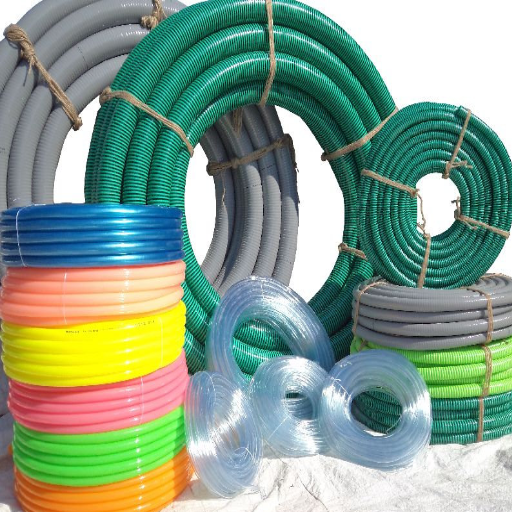
Considerations When Choosing PVC
Operating Temperature: Consider the temperature conditions of your application. PVC is generally rated for use up to about 140°F, whereas CPVC is designed for high-heat scenarios in which temperatures of up to 200°F may be encountered. Thus, CPVC is the better alternative for hot water lines or industrial applications needing thermal durability.
Chemical Compatibility: In cases where the project involves harsh chemicals, CPVC offers better resistance to acids, bases, and salts than does the standard PVC. Consequently, it assures a long life in processes involving chemicals and in laboratories.
Pressure Ratings: PVC and CPVC pipes and fittings are rated differently for their pressure capabilities. The CPVC typically has a higher pressure rating, making it suitable for use in systems where maintaining a consistent pressure over a predefined period is crucial. Always check the rating according to the specifications of your PVC to confirm that it suits your project’s needs.
Cost-Effectiveness: Budget is a valid concern while choosing PVC materials. Standard PVC can cost almost a fraction of CPVC, making it the obvious first choice for low-budget projects, such as residential projects or those applications that require little demanding PVC. However, it may be worthwhile to invest in CPVC for those applications where durability to heat and chemicals is essential.
Installation and Compatibility: Both PVC and CPVC are relatively lightweight and easy to install. However, CPVC installation requires solvent cements and primers that are usually more specialized. Additionally, since CPVC has a thicker wall structure, it is essential to check for compatibility with existing systems, as it has slightly different sizing standards.
Environmental Consideration: Choose materials based on the ecological conditions in which they will be used. For example, UV radiation will cause PVC to degrade over time. UV-rated coatings should be applied, or materials chosen that have received pre-treatment for UV resistance, if it is to be installed in the sun.
Applicable Standards and Regulations: Ensure that the PVC type you choose adheres to the industry and regional body standards and regulations. For example, CPVC is specified in building codes for fire-resistant sprinkler systems, whereas standard PVC is used to eliminate water systems.
Careful evaluation of these considerations ensures that the selected type of PVC or CPVC fulfills the functional, economic, and legislative needs pertinent to your project in particular, thereby guaranteeing optimal performance and longevity.
Common Uses of Various PVC Grades
The versatility, durability, and cost-effectiveness of PVC (Polyvinyl Chloride) and its modified forms allow the materials to be applied in a wide array of applications. It lists some of the more common applications for various PVC grades:
Construction and Building: Rigid standard PVC is widely used in the construction industry for water and plumbing systems, encompassing pipes, fittings, and ducts. It is also favored in applications such as window frames, vinyl siding, and flooring due to its mechanical strength and weather-resistant properties. CPVC finds greater applications in hot water systems and fire sprinkler installations owing to its higher temperature tolerance and fire resistance.
Insulation for Electrical and Cable: PVC finds wide applications in cable sheathing and conduit systems due to its electrical insulating properties. Wire insulation, then, commonly uses flexible PVC for durability and electrical safety.
Healthcare Applications: Medical-grade PVC is widely used in healthcare for intravenous (IV) bags, tubing, and oxygen masks due to its biocompatibility, sterilization properties, and flexibility. Being highly resistant to chemicals, PVC ensures safe handling of medicines and bodily fluids.
Packaging: Due to its lightweight and transparent properties, PVC is widely used in packaging food, pharmaceutical, and consumer products. PVC films and sheets protect the contents while enhancing visibility and maintaining hygiene.
Consumer Goods and Sporting Equipment: Flexible PVC is employed quite extensively in the manufacture of consumer goods, particularly rainwear, footwear, and upholstery. Similarly, it is also featured in sporting goods, including yoga mats, inflatables, and gym equipment, due to its strong yet flexible nature.
Agriculture and Irrigation Systems: PVC serves agriculture in various forms, including irrigation pipes, greenhouse covers, and drainage systems. The piping’s resistance to corrosion and UV degradation ensures longevity in harsh environmental conditions.
Automotive Components: PVC is used in dashboards, seals, cable insulation, and interior trims in the automotive industry. As a lightweight yet sturdy material, it reduces the vehicle’s weight while meeting safety standards and aesthetic requirements.
By gaining an understanding of the properties of various PVC grades, an appropriate selection can be made from the industry to optimize working conditions, adhere to safety standards, and achieve economic benefits. The various usages of differing PVC grades provide a significant platform on which long-lasting and sustainable industrial solutions are built.
How to Identify Which PVC Type Is Best For Your Specific Needs
Choosing the right type of PVC is crucial for achieving successful performance and meeting industry requirements. To select the correct PVC grade, consider the intended use, specific environment, and compliance requirements. For example, flexible PVC is often used where flexibility is required, such as in hoses, cables, or flooring. Rigid PVC, however, is better suited for tasks where strength and structural integrity are crucial, such as pipelines and window profiles.
See what kinds of mechanical properties the material has, such as tensile strength, impact resistance, or thermal stability. For instance, a company located in a colder climate might be interested in cold-weather resistance, while one exposed to heat will need PVC grades with increased heat distortion resistance. Then, check resistance to chemicals, UV radiation, or moisture, depending on how much exposure you’ll have to these elements from your working environment.
Cost efficiency and sustainability are also considered. Choosing recycled or bio-based PVC, where possible, can reduce environmental impact while meeting contemporary sustainability goals. Additionally, ensure compatibility with relevant regulations, such as REACH or RoHS, to ensure safety and compliance.
By carefully evaluating these factors, an industry can select a PVC that meets performance expectations and regulatory requirements, thereby ensuring reliability and meaningful input in the long term.
Application of PVC in Pipes and Fittings
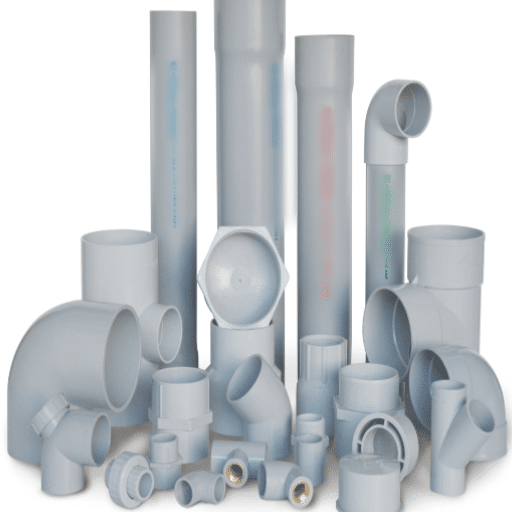
PVC Pipe: Overview and Benefits
For many years, PVC pipes have been widely used in various industries due to their versatility, durability, and affordability. They are widely used in plumbing, water supply systems, sewage systems, and agricultural irrigation due to their high resistance to corrosion, chemicals, and environmental wear. They are also lightweight, making shipping and installation simpler, which greatly helps in saving time and labor costs.
Recent developments have further strengthened the commercial appeal of PVC pipes. With different formulations and manufacturing processes, enhancements have been made to their strength-to-weight ratio, and the life expectancy can usually exceed 50 years if well designed. The smooth internal surface of these pipes allows water to flow with minimal resistance, thereby maintaining water pressure and reducing debris accumulation. Recycling PVC pipes after their service is yet another eco-friendly approach that complements recent greening initiatives.
As urbanization and infrastructure projects develop, the PVC pipe industry continues to expand into emerging economies, as cited by the global PVC market. PVC pipe demand from the construction sector is expected to increase, driven by improvements in energy efficiency and weather resistance, which will enable it to perform well in a broad range of conditions. Together with affordable manufacturing options, PVC pipes quickly become a developer’s and engineer’s first choice for durability, offering significant value over a long period.
PVC Pipe Fittings: The Most Versatile and Efficient for Any Work
When considering the construction of PVC pipe fittings, one can never do away with their versatility and efficiency. These fittings are lightweight and durable, making their installation easy and reducing labor costs. The fittings also resist corrosion, chemicals, and weathering well, hence guaranteeing the long-term performance of the systems in specific and hostile environmental conditions.
Recent manufacturing advancements have enhanced the performance and adaptability of PVC fittings, ensuring they are manufactured to precise specifications for use with various piping systems. PVC fittings are abundant in types such as couplings, elbows, tees, and reducers, and, depending on the application, can be used for plumbing, irrigation, and HVAC systems, as well as drainage and wastewater systems.
Statistical data highlight that these fittings are gaining popularity in water supply systems due to their minimal maintenance and high resistance to water pressure. It is with these features that PVC pipe fittings continue to provide a solution that the industry demands, hence, cost-effective, long-lasting, and environmentally friendly.
About Impact PVC and Its Special Uses
Impact PVC is a type of PVC characterized by its heavy-duty toughness, which enhances its performance in applications where durability is crucial. It is achieved through the special composition, which usually includes modifiers like acrylic or chlorinated polyethylene, enhancing its impact strength while retaining the advantageous qualities of regular PVC, such as chemical resistance and ease of fabrication.
One of the best applications of impact-resistant PVC is in piping systems in industries where the material must withstand environmental stress and pressure variations without crack formation or degradation. Impact PVC is also widely used in making protective casings, as well as for creating electrical conduit systems and window profiles, due to its high level of dimensional stability and resistance to external forces.
Current market studies indicate a growing trend toward the use of impact-resistant PVC in infrastructure projects, particularly in countries susceptible to extreme weather conditions. Its ability to withstand thermal fluctuations and resist UV radiation makes it suitable for outdoor uses, such as fencing, decking, and exterior cladding. Combining this with green considerations, due to its recyclability, gives impact PVC the edge as a preferred material in forward-looking engineering and construction.
Advantages and Disadvantages of PVC
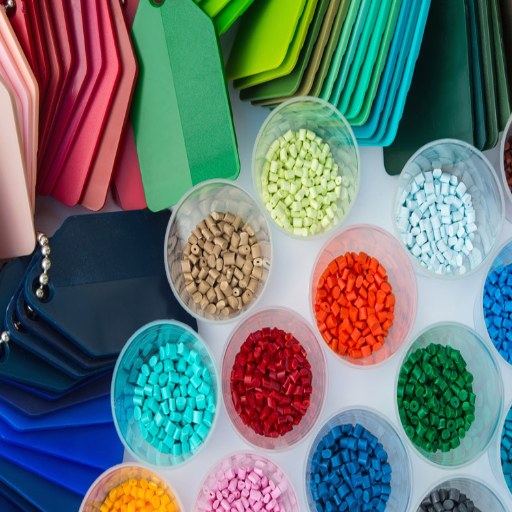
Benefits of Using PVC in Construction
PVC offers several advantages, earning it a distinguished place in modern construction. Arguably, durability is its most important asset. PVC, resistant to corrosion, may withstand weathering and chemical exposure and thus performs well in different atmospheres. It is both light and sturdy, making transportation and installation relatively inexpensive, yet structurally sound. Furthermore, it is also a good insulator against heat and sound, which provides another benefit by promoting energy efficiency and comfort inside buildings.
Other essential benefits include versatility. The material can be molded or extruded into any shape conveniently, thereby lending itself to a variety of uses, including pipes, window profiles, insulation for wiring, and flooring. Advances in manufacturing techniques have also made it possible to produce special versions of PVC that are resistant to UV rays and impact, thus widening its exterior applications, including roofing and cladding.
From a sustainable perspective, PVC is highly recyclable; it can be reprocessed two or more times without significant degradation of its quality. This enables the material to be promoted within a circular economy framework, thereby assisting construction projects in becoming more environmentally sustainable. Production processes have, in recent years, significantly reduced the carbon footprint of PVC material substances, further enhancing the green character of PVC today.
Due to its low maintenance and relative affordability compared to wood or metal alternatives, PVC remains a more cost-effective option in larger construction projects. These advantages, combined, are indicators of how much the material has granted the realization of demands in modern construction and engineering.
Environmental Aspects of PVC Usage
Although PVC offers numerous benefits for construction and engineering, its sustainability raises concerns. One of the pressing concerns is the release of hazardous substances during manufacturing and disposal. PVC production often involves the use of chlorine and other additives, which, if not adequately controlled, can contribute to polluting emissions. However, these days, patiently harnessing modern advances in manufacturing has alleviated many of the apprehensions. The newer plants increasingly develop towards a closed-loop system.”
PVC recycling remains pivotal to meet sustainability goals. Research evidence suggests that PVC recycling can achieve a reduction in the energy demands of up to 55% in the manufacture of virgin materials. Besides, PVC maintains its durability, allowing the lifecycle to be prolonged; hence, new raw material extractions become less necessary. According to recent data, a stride in the rise in global PVC recycling could drastically reduce resource consumption and waste generation.
Additionally, research is being conducted on bio-based PVC substitutes derived from renewable sources. This shift aims to reduce fossil fuel dependency, thereby enhancing the ability to address environmental concerns more quickly. Without a doubt, focusing on suitable disposal, recycling, and further sustainable improvement will reduce the ecological footprint of PVC, alleviating concerns while maintaining the associated benefits of function.
Future Trends in PVC Development
When I consider the future of PVC development, I see great potential in its sustainability and functional improvements. One of the ongoing trends is the development of bio-based PVC alternatives using renewable sources to minimize their environmental impact. These materials aim to reduce dependency on fossil fuels, aligning with global efforts to combat climate change. Additionally, the enhancement of molecular recycling technology will significantly improve PVC recovery, allowing end-of-life products to be recycled efficiently and reused rather than discarded. This would reduce PVC from piling up in landfill sites and also save valuable resources, further establishing a closed-loop system that benefits both manufacturers and the environment.
Another advancement in PVC technology involves integrating innovative materials that enhance PVC performance for various applications. For instance, innovative functionality applications, such as self-healing materials or those with embedded sensors, would open up new opportunities in construction, healthcare, and electronics. Through these new inventions, PVC will not only become more useful but also expand its applicability in technology-oriented industrial sectors.
Furthermore, I see cooperation among researchers, manufacturers, and legislators as a continuous source of motivation for this fact. By working together with tighter environmental legislation and consumer demand for greener alternatives, the development of PVC materials will effectively address the sustainability challenges of tomorrow, while remaining practical and cost-effective today. Being at the forefront of combining environmental responsibility with groundbreaking functionality, the PVC future is almost here.
Reference Sources
-
Polyvinyl Chloride (PVC): How to Select the Right Grade?
Provides insights into the mechanical properties, chemical resistance, and applications of PVC grades. -
The Comprehensive Guide to Polyvinyl Chloride
Explains the key properties and uses of various PVC grades tailored for specific applications. -
Polyvinyl Chloride – Wikipedia
Offers an overview of PVC, including its rigid and flexible forms and their respective uses. -
6 Types of PVC Pipes: Benefits & Drawbacks
Discusses different types of PVC pipes, their properties, and their applications. -
PVC Pipe Grades
Focuses on the classification of PVC pipe grades based on material quality, pressure resistance, and other factors. - Top Plastic Pellets Suppliers in China
Frequently Asked Questions (FAQs)
What are the different grades of PVC used in pipe fittings?
Different grades of PVC, including rigid and flexible, are used in the production of pipe fittings. Rigid PVC is used in pressure applications, such as water supply lines, due to its toughness and corrosion resistance. Flexible PVC contains plasticizers to make it flexible enough for applications requiring bending and movement. Additionally, selecting a grade of PVC can also impact the life expectancy of the bridging fittings in various environmental conditions. Every grade has its characteristic physical properties that distinguish it from the others, depending on the application set.
How does molecular weight affect PVC type?
The weighted molecular assembly has a significant impact on the physical properties and performance of PVC. High molecular weight PVC generally exhibits greater toughness and resistance to impact, making it an excellent choice for harsh working environments. Lower molecular weight grades may be used in areas where flexibility is more important. It is essential to consider these characteristics in conjunction with other factors that may impact PVC performance, such as application and environmental conditions.
What are the typical applications for chlorinated PVC?
Due to its enhanced durability and resistance to heat and chemicals, CPVC finds wide application. Typical applications of CPVC include piping systems for hot and cold water as well as industrial piping. From the perspective that PVC cannot withstand high temperatures or corrosive substances, CPVC excels in such demanding environments. The higher chlorine content present in CPVC makes it suitable for withstanding high temperatures and corrosive substances, which is what makes it popular in the fields of construction and manufacturing.
How do I choose the right PVC for electrical cable insulation?
One considers the specific requirements of the job when selecting PVC for electrical cable insulation. Some features to consider include heat resistance, flexibility, and electrical insulation capacity. Rigid PVC is typically used for its rigid physical properties, while flexible varieties are preferred for applications that require flexibility and movement. It is also essential to understand the effect of any additives, including plasticizers, on performance. Other factors to consider include the environmental conditions that will be present where the cable is laid, to ensure its insulation and safety.
What is the importance of PVC in medical devices?
PVC finds a significant role in medical devices, thanks to its versatility and safety. Various PVC grades include unplasticized PVC and plasticized PVC, with products such as IV bags, tubing, and medical packaging. The material is selected because it withstands use in healthcare environments and is sterilizable. Furthermore, the mode of PVC enables manufacturers to choose from a vast variety of PVC grades, allowing them to comply with strict regulatory standards. This flexibility ensures that, for medical applications, PVC will always be a dependable choice, even today.
What are the advantages of using recycled PVC products?
Recyclable PVC products are environmentally friendly options that help reduce waste and lower energy consumption. Recycled PVC is used in various applications, including the construction and manufacture of new PVC pipes, thereby promoting recycling methods in the actual construction process. The process of recycling counterparts helps save natural resources and reduce the carbon footprint in manufacturing PVC. Further use of recycled PVC would serve as an inspiration for sustainability in the PVC industry, pushing innovation towards greener practices. A desirable choice for the accompanying parties, including both manufacturers and consumers, who seek to lessen their environmental impact.

